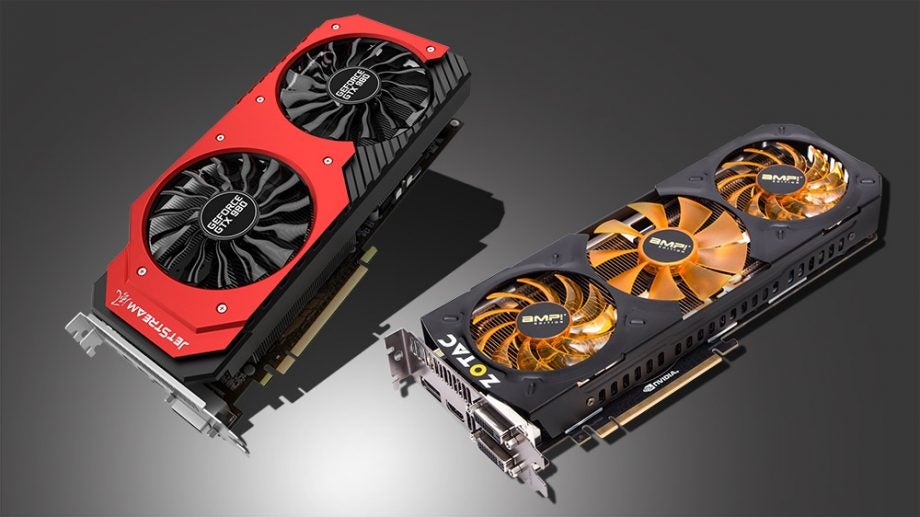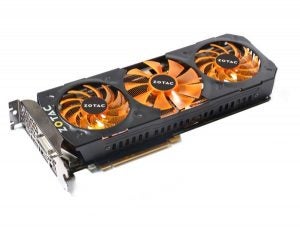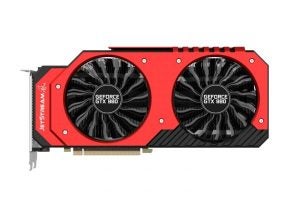Nvidia GeForce GTX 980 v AMD Radeon R9 290X

GTX 980 vs R9 290X: Which should you buy?
The two cards in our latest head-to-head battle are the supercars of the GPU world – high-end products that represent the pinnacle of the current market and show off the very latest technology.
Nvidia’s GeForce GTX 980 is the newer of the two cards, and it represents the culmination of the Maxwell technology used in the GTX 750 Ti and GTX 970 – the first time it’s been deployed in its complete form, without parts of the chip disabled or with lowered clock speeds. It’s also the priciest of the two cards here – to get the GTX 980 you’ll have to spend between £420 and £527.
AMD’s card launched at similar prices in October 2013, but it’s since seen price cuts – so now it costs a more palatable £256 to £400, depending on the card you buy. That means it’s got a great chance of upsetting Nvidia’s hardware when it comes to pure bang-per-buck performance.
SEE ALSO: GeForce GTX 750 Ti vs Radeon R7 265
AMD’s older card is much cheaper at between £250 and £400
Nvidia GeForce GTX 980 v AMD Radeon R9 290X: Under the Hood
The GTX 980 uses the GM204 core that’s also found inside the GTX 970, but it’s able to access the full complement of sixteen streaming multiprocessors, rather than the thirteen used in the lesser card. That means it’s got 2,048 stream processors and 128 texture units – both more than the cheaper GPU.
That’s not the only area where the GTX 980 pushes the boundaries. Its base clock starts at an enviable 1,126MHz and rises to a Boost peak of 1,216MHz, and its 4GB of GDDR5 RAM is clocked to an effective 7GHz.
Maxwell also places huge emphasis on power efficiency, which means this high-power card requires two six-pin power connectors rather than the six- and eight-pin requirements of AMD’s alternative.
The R9 290X is an older part, and it’s significantly cheaper than its rival. It doesn’t use a new architecture, instead relying on the Graphics Core Next system that was also used for the last generation of GPUs – and the Hawaii core inside the R9 290.
This is AMD’s most powerful single-GPU card, so the Hawaii GPU is unfettered, with 2,816 stream processors divided into 44 larger compute units. It’s clocked to 1,000MHz, and it’s got 4GB of memory that’s clocked to 5GHz. That’s slower than the GTX 980, but it’s accessed with a 512-bit bus that’s twice the width of Nvidia’s card, so total memory throughput sits at 320GB/s, which is higher than the GTX 980’s 224GB/s bandwidth.
SEE ALSO: Nvidia GeForce GTX 270 vs AMD Radeon R9 290
Nvidia’s new card goes for anywhere between £420 and £530
Nvidia GeForce GTX 980 v AMD Radeon R9 290X: How We Test
We’ve tested these powerful cards with five games: Batman: Arkham Origins, Battlefield 4, Bioshock Infinite, Crysis 3 and Metro: Last Light. Each title is run at its highest settings, and we’ve tested each game at 1,920 x 1,080, 2,560 x 1,440 and 3,840 x 2,160 – 4K.
We’ve also used a selection of synthetic benchmarks, with 3D Mark Fire Strike and Unigine Heaven 4.0 both used to test the raw horsepower of these GPUs.
We’ve measured the idle and peak temperatures of the two cards, and noted the idle and peak power requirements of our test rig, which comprises of an Asus X79-Deluxe motherboard, Intel Core i7-4960X processor, 16GB of RAM and a 1TB hard disk.
To get prices for each card we visited www.scan.co.uk and noted down the range of prices for each card, although we will be referring to the various overclocked and tweaked models available for each GPU, which will be more expensive.


